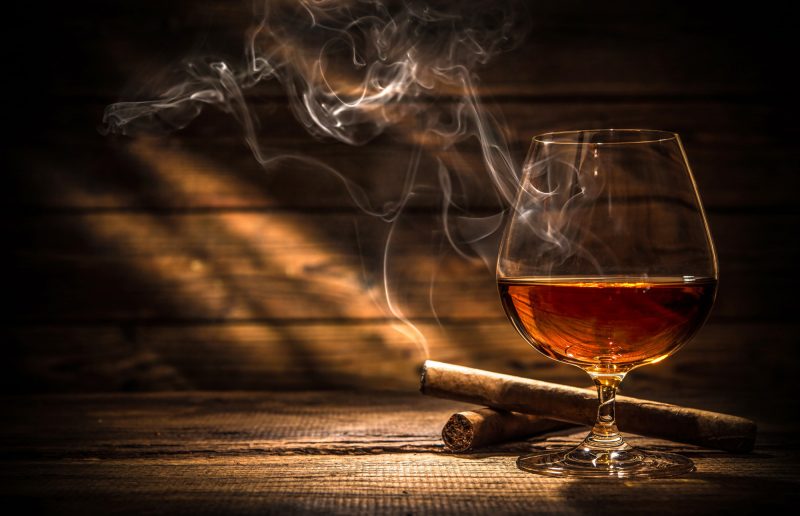It was estimated that in December 2018, Americans consumed 6.868 million, 9 liter cases of whiskey. It’s clear that Americans, Canadians and most of the world, love their scotch, whiskey, and bourbon.
But do all of them understand the art of consuming whiskey?
The answer’s a definite no, but if you’re someone who doesn’t, but wants to, this guide will help you transition from an amateur drinker to a certified whiskey connoisseur.
ADVERTISEMENT |
Do Temperatures Matter?
They sure do. Some people like to serve their drinks cold or refrigerate them before consumption. But if you want to get the most out of your whiskey, it’s best to serve it at room temperature.
Refrigerating your whiskey tightens up the flavors in your scotch. However, at room temperature, you’ll be able to better appreciate a whole range of flavors like a true connoisseur.
The Choice of Glass
This one might seem pretty obvious, but it’s not. You probably associate whiskey with those short tumblers you’re so used to seeing, right? However, what’s considered more appropriate is a tulip-shaped glass.
These allow for your drink to swirl around without spilling over and wasting valuable scotch. Another reason is the fact that it allows the aromas of your whiskey to concentrate at its neck, making the drink far more enjoyable to the trained taster.
ADVERTISEMENT |
The Stages of Consuming Whiskey
Well, now that you’ve poured yourself a fine glass of room temperature scotch whiskey, it’s finally time to sit down to a drink. But scotch aficionados demand that you do not rush the process. Take your time and enjoy every part of the experience.
Step 1: The Many Shades of Scotch
The first thing you’ve got to do is examine your whiskey against a light. You’re doing this to check what shade of color your scotch is. The color of your drink against the light will allow you to make an educated guess on how the scotch was matured.
A darker or more golden shade of scotch indicates a sherry oak cask. However, a lighter or paler shade might be a sign that a bourbon cask was used.
Step 2: Determining the Age
This where you do something called “legging”. To do this right, you need to hold your glass by the stem, give it a swirl, and continue until the sides have a coating of your scotch.
Then you observe the scotch drip back down into the base of the glass. The slower it moves, the older your drink is, and vice versa.
ADVERTISEMENT |
Step 3: Nosing Around
“Nosing” your whiskey, is just scotch lingo for smelling your drink. To do it right, hold your glass away from you, pass it under your nose, breathing in the aroma as it passes.
Now ask yourself what the aroma reminds you of. Try this again a few times, until you narrow down a few flavors and notes that your expert senses pick up.
Step 4: Time for a Taste
And now, it’s time for a good ‘ol drink of scotch whiskey.
ADVERTISEMENT |
The first thing you’ve got to do is make a tiny “spoon” at the end of your tongue. Then, you take a sip of your drink, letting it rest on your tongue for a little bit.
Now, you can take a bit of time to recall all those notes you detected through the “nosing” process, and form more associations and flavors as you process the taste. Don’t let a self-proclaimed connoisseur tell you you’re wrong. Taste is subjective, and the whole point is to be able to enjoy the experience through the lens of varying perceptions.
If you want to further improve your ability to taste or drink whiskey read more here.
ADVERTISEMENT |
Mixers: Yay or Nay?
Well, this one has always been a subject of great debate among “Scotchmen”. While most agree that having your drink neat is the only way to truly experience it, others insist that water helps bring out the flavor.
So you can probably have it either way, but if you do need a mixer, you should probably stick to water. However, before you add the water, do get a proper taste of your scotch, neat.
Storing Your Scotch
Ideally, you would store your scotch in a cellar. However, most houses do not have these, so it’s fine if you don’t either. All you’ve got to do is replicate the kind of conditions that a cellar would have had.
ADVERTISEMENT |
Those are – minimal lighting and relatively low, but uniform temperatures. Definitely avoid any place with direct sunlight, because sunlight can be fatal to a good scotch. It breaks down the alcohol and also causes potentially drastic changes to its flavors.
A good place to store your bottles would be a dark, cool cabinet that is away from direct sunlight and windows. Keep your bottles in an upright position. Do remember that open scotch bottles begin oxidizing after a period of one year.
Scotch Hopping?
Want to give scotch tasting a try? Well, now that you’re all caught up on the art of consuming whiskey, it’ll be good to put it into practice.
ADVERTISEMENT |
You could visit local bars that practice this sort of thing, hire a tasting service, or just consider hosting your own whiskey tasting party with a few friends. Once you get the hang of it, perhaps you can expand your circles to fellow scotch enthusiasts.
Like this article? Explore the rest of our page for more top-notch content on life in the city!






